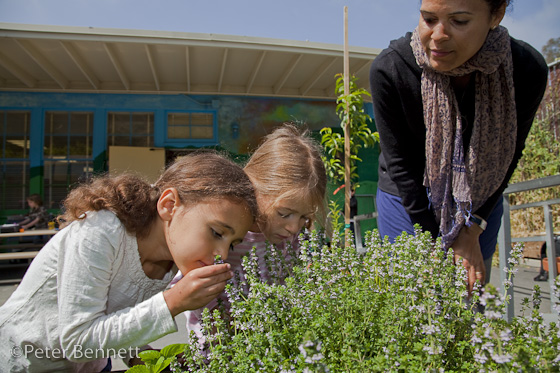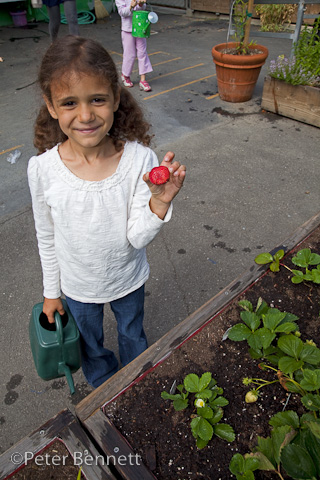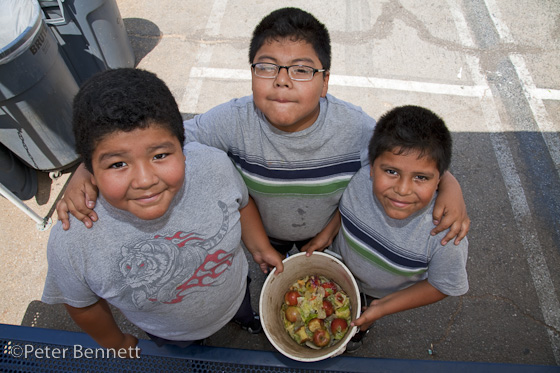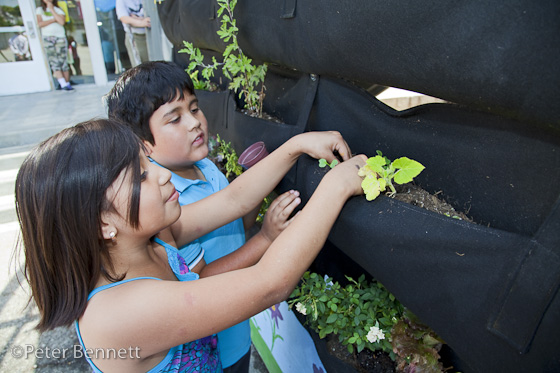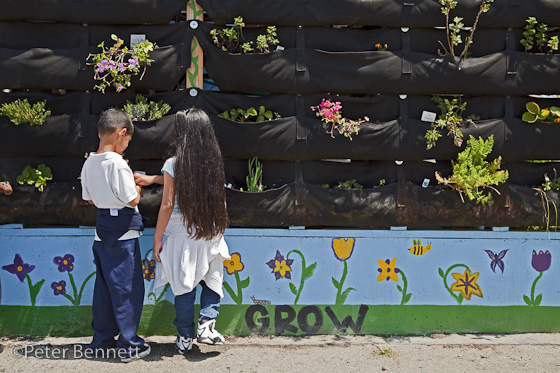School Gardens
I recently spent a few weeks shooting gardens at some local elementary schools here in Los Angeles for a magazine article I was working on. Growing up in New York City suffice to say I wasn’t exposed to many gardens, certainly not at school. Some nice house plants maybe, but the closest thing I got to growing produce was the ever present avocado pit that my mother would stick in a jar on the kitchen window sill, hoping it would sprout into a tree one day. I can safely say that the 20 or so pits she tried to grow did not bear fruit. I hope my son gets more of an opportunity to learn about this than I did, and with some of the school gardens I had a chance to visit, the prospects look good.
At one time LA had over 70 or so school gardens, now there are much less, school budgets probably, but hopefully they are back on the rise. I have actually been photographing a lot of gardens and gardeners lately and I had no idea how extremely popular it is here in Los Angeles, and just about everywhere. It makes sense, with economic times being what they are, people are looking for ways to be more self sustainable, and nothing is more self sustainable than growing your own food. I saw the coverage of Michelle Obama planting an organic vegetable garden on the lawn of the White House and I think that helped send a message to folks across the country that growing your own food is both cool and sensible.
One young mother invited me to photograph her and her two daughters at their school garden in Laurel Canyon. The girls picked up watering cans and immediately went to work, obviously comfortable with the routine and all too enthusiastic to show me the several planting beds in the school yard that were growing strawberries and a variety of greens, beans and herbs. The fact that their mother is in the Master Gardener program at UC will probably make gardening second nature to these two girls, much like growing up in a bilingual household will enable a child to have a lifelong proficiency in a second language.
Underneath the intersection of the 10 and the 110 freeways is the Downtown Value School, a public charter school serving low income neighborhood schoolchildren near and around downtown Los Angeles. Over the years they have built a garden that goes around almost the entire perimeter of the school and even includes a small greenhouse. The gardens act as an outdoor classroom, and the day that I was there, three boys collected the discarded food leftover from their classmate's lunch and emptied it into the school worm composter.
In the schoolyard they also have vertical garden with a variety of greens, beans and berries growing out of the small pouches of soil. This vertical garden was supplied by Woolly Pockets and is a great way to plant a garden in a small area; it is made up of rows of soft breathable pockets, stacked on top of each other so you literally have a wall of plants. In addition to having a very cool product, Woolly Pockets also gives back to the community through its Woolly School Garden Program, which helps schools raise donations to start these vertical gardens.
A few weeks earlier I had attended a Big Sunday Weekend event, the largest annual citywide community service event in America. A few hundred children, parents and teachers all came out to help plant and fix up the garden at the 24th street School in the West Adams District. There were kids shoveling mulch, families weeding out planting beds and people generally having a really good time. It was encouraging to see communities coming together to do service, for schools to be teaching kids about growing food, not only for the practicality of it, but for the beauty of it as well, and for parents to pass down perhaps a renewed tradition of growing your own food and eating healthier because of it. Childhood obesity is through the roof, and I can see nothing more contrary to junk food and fast food than what I saw at all these schools.
